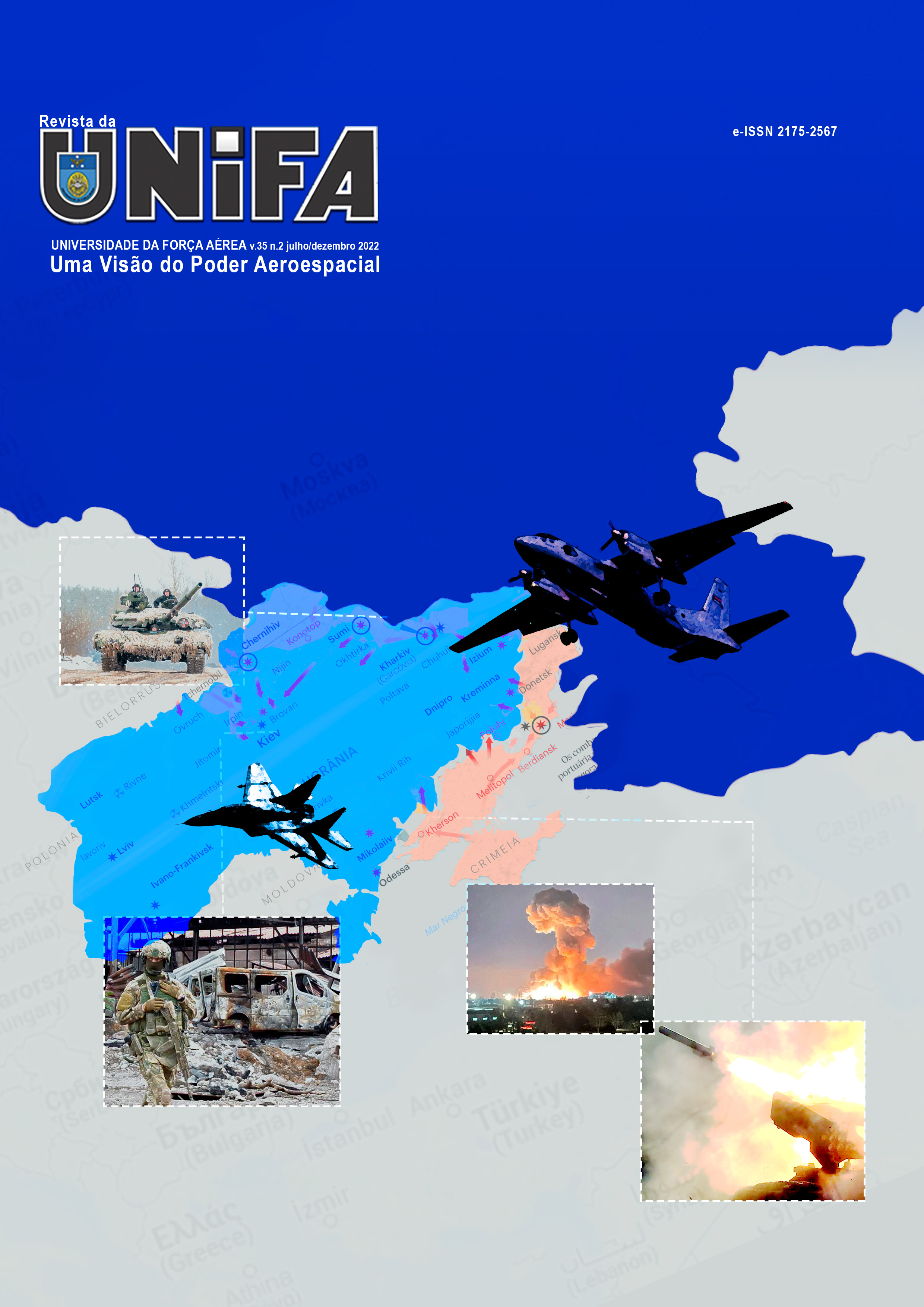Creation of an Anti G-LOC program at the FAB for the operation of the F-39 Gripen aircraft
DOI:
https://doi.org/10.22480/revunifa.2022.35.504Keywords:
GRIPEN, G-LOC, Program, Training, PreventionAbstract
The F-39 aircraft is being incorporated into the Brazilian Air Force (FAB) and brings with it maneuvering capabilities of up to 9G (nine times the force of gravity). Thus, Brazilian pilots will be subject to the effect of G-LOC (G-induced loss of consciousness), which would be the loss of consciousness due to G-force, extremely dangerous and common in high-performance aircraft. This article argues that the creation of a structured program “Anti G-LOC” in the FAB, through classes, physical training, centrifuge training and performance monitoring, is necessary to guarantee the safe operation of the F-39 Gripen aircraft. First, it is argued that several air forces around the world have initiated programs to prevent G-LOC and achieved positive results in this regard. They used the centrifuge, in a controlled environment, to increase the pilot’s tolerance to G, with training and execution of AGSM breathing maneuvers (Anti G Straining Maneuver), classes for crew awareness and anaerobic physical training. Secondly, the analysis of data collection, due to the large number of personal variables involved such as age, physical type, flight experience, etc., proved to be extremely important so that the knowledge produced could be reinvested in the programs themselves in order to improve them. them, considering that several studies lacked more data for their validation. Therefore, with the creation of an Anti G-LOC program, the FAB will invest in the Flight Safety of the F-39 Gripen, preventing accidents, saving material losses and safeguarding lives. Furthermore, the development and improvement of the program will serve as a reference for new studies to be initiated in the Armed Forces and in Brazil.
References
BATEMAN, William A.; JACOBS, Ira; BUICK, Fred. Physical conditioning to enhance+ Gz tolerance: issues and current understanding. Aviation, space, and environmental medicine, v. 77, n. 6, p. 573-580, 2006.
CAO XIN-SHENG et al. Visual Symptoms and G-Induced Loss of Consciousness in 594 Chinese Air Force Aircrew—A Questionnaire Survey. Military Medicine, [S.I.], v. 177, n. 2, p. 163-168, 2012.
DOLGIN, D. L. et al. Instructor Pilot Evaluations of Key Naval Primary Flight Training Criteria. NAVAL AEROSPACE MEDICAL RESEARCH LAB PENSACOLA FL, 1987.
GALVAGNO S. J., MASSA TV, PRICE SC. Acceleration risk in student fighter pilots: preliminary analysis of a management program. Aviation Space Environmental Medicine, [S.I.], v. 75, n. 12, p. 1077-1080, 2004.
GILLINGHAM, Kent K.; FOSDICK, John P. High-G training for fighter aircrew. SCHOOL OF AEROSPACE MEDICINE BROOKS AFB TX, 1988.
KIRKHAM W. R., WICKS S. M., LOWREY D. L. Gincapacitation in aerobatic pilots: A flight hazard. Federal Aviation Administration, Washington, FA-AM-8 82-13, p. 1-33, out. 1982. Disponível em: https://skybrary.aero/ bookshelf/books/2756.pdf. Acesso em 05 maio 2021.
LIN, Pei-Chun; WANG, Jenhung; LI, Shih-Chin. Subjective stress factors in centrifuge training for military aircrews. Applied Ergonomics, v. 43, n. 4, p. 658-663, 2012. Acesso em 11 abr. 2021.
LYONS, T. J. et al. G-induced loss of consciousness accidents: USAF experience 1982-1990. Aviation, space, and environmental medicine, v. 63, n. 1, p. 60-66, 1992.
SEVILLA N. L., GARDNER J. W. G-induced loss of consciousness: case- control study of 78 G-LOCs in the F-15, F-16, and A-10. Aviation Space Environmental Medicine, [S.I.], v. 76, n. 4, p. 370 –374, abr. 2005.
VASHISTH S., KHAN M., VIJAY R. and SALHAN A. K. A review of high G-stress induced problems and their solutions, Int. J. Medical Engineering and Informatics. 2017; v. 9, n. 1, p. 47–60, jan. 2017. DOI: 10.1504/IJMEI.2017.080924 https://www. researchgate.net/publication/312472514_A_review_ of_high_G-stress_induced_problems_and_their_ solutions. Acesso em 11 abr. 2021.
WEBB J. T., OAKLEY C. J., MEEKER L. J. Unpredictability of fighter pilot G tolerance using anthropometric and physiologic variables. Aviation Space Environmental Medicine, [S.I.], v. 62, p. 128-135, fev. 1991.
Downloads
Published
Issue
Section
License
Copyright (c) 2022 Rafael Rodrigo Mancin de MoraisRevista da UNIFA permite que o (s) autor (es) mantenha(m) seus direitos autorais sem restrições. Atribuição-NãoComercial 4.0 Internacional (CC BY-NC 4.0) - Revista da UNIFA é regida pela licença CC-BY-NC









